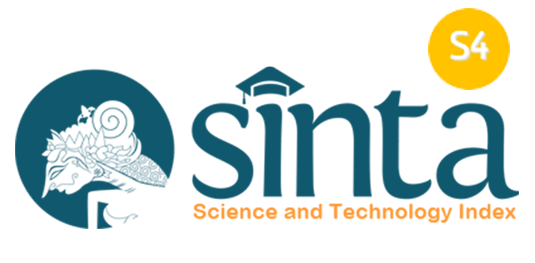Penanganan Siswa Hiperaktif di Sekolah Dasar melalui Model Contextual Teaching Learning (CTL) Berbantuan Metode Self Instruction
Abstract
Hyperactive students are a challenge for teachers in learning because they can interfere with the learning process. Teachers can choose the right learning model and learning method so that learning can run well. This study aims to determine the implementation of the Contextual Teaching Learning (CTL) model assisted by the Self Instruction method in dealing with hyperactive students. This type of research is qualitative research with a case study approach using descriptive qualitative methods. Data collection techniques in this study used observation, questionnaires and interviews. The research subjects were 1st grade students totaling 2 children out of 29 students. The results of this study indicate that the use of the CTL learning model assisted by the self-instruction method creates a more effective atmosphere in learning. It is proven that during learning, an interactive classroom atmosphere is created conducive to the teacher's efforts in explaining the material to all students. The use of instruction through positive affirmation sentences is able to encourage students to consider their own decisions regarding the behavior they do.
References
Anggraeni, P. & Akbar, A. (2018). Kesesuaian Rencana Pelaksanaan Pembelajaran dan Proses Pembelajaran. Jurnal Pesona Dasar, 6(2), 55–65.
Depdiknas, D. (2021). Pembelajaran dan Pengajaran Kontekstual. Logaritma, 2(1).
Diana, E. & Rofiki, Moh. (2020). Analisis Metode Pembelajaran Efektif di Era New Normal. Jurnal JRPP, 3(2), 336–342.
Efendi, M., Nadila Putri, Y., Azizah Baitul Atiq, N., Ramadani Sarah, P., Dian Pertiwi, A., & Sjamsir, H. (2022). Pola Asuh Terhadap Anak Attention Deficit Hyperactivity Disorder (ADHD). Jurnal Pelita PAUD, 7(1), 226–235. https://doi.org/10.33222/pelitapaud.v7i1.2500
Hasan. (2021). Meningkatkan Hasil Belajar Matematika Melalui Penerapan Model Contextual Teaching and Learning Pada Era New Normal. Indonesian Journal of Educational Development, 1(4), 630–640. https://doi.org/10.5281/zenodo.4560726
Jawandi, A. (2018). Keefektifan Konseling Cbt Teknik Self InstructionUntuk Meningkatkan Karakter Kuat Dan CerdasPada Mahasiswa Universitas Slamet Riyadi. Medikons: Jurnal Prodi Bimbingan dan Konseling, 4(1)
Juniardi, W. (2023). Karakteristik Siswa yang Wajib Guru Ketahui. Quipper Blog.
Khaira, N. A. (2018). Penerapan Teknik Self Instruction Untuk Mengurangi Kejenuhan Belajar Siswa. Jurnal Pencerahan, 12(2), 172–200.
Magdalena et al, I. (2021). Belajar Makin Asyik dengan Desain Pembelajaran Menarik. In CV Jejak (Jejak Publisher).
Malau, T. F., Harianja, K. N., Simarmata, Y., & Turnip, H. (2022). Pentingnya Administrasi Sarana Dan Prasarana Pendidikan. Dewantara : Jurnal Pendidikan Sosial Humaniora, 1(4), 186–195.
Nasution, S. W. (2022). Asesment kurikulum merdeka belajar di sekolah dasar. Prosiding Pendidikan Dasar, 135–142. https://doi.org/https://doi.org/10.34007/ppd.v1i1.181
Nurheda, N. (2019). Perilaku Hiperaktif Siswa dan Penanganannya.
Prabawati & Ditasari, F. A. M. niken nurmei. (2018). Peningkatan Atensi pada Anak ADHD dengan Teknik Self Instruction. Philanthrophy Journal of Psychology, 2(1), 27–36.
Pratiwi, A. D., Yayuk, E., & Widjaja, J. R. (2019). Peningkatan Keterampilan Menulis Puisi Melalui Model Ctl Pada Tema 5 Subtema 3 Di Kelas II Sekolah Dasar. Jurnal Pemikiran Dan Pengembangan Sekolah Dasar (JP2SD), 7(1), 1–6.
Sabani, F. (2019). Perkembangan Anak-anak Selama Masa Sekolah Dasar. Didaktika: Jurnal Kependidikan, 8(2), 89–100.
Suprima, S., Parhan, M., Khairulimam, A., Nurfitriyani, M., & Ababil, S. N. (2021). Dakwah di masa pandemi Covid-19: Eksistensi, problematika serta solusi. Jurnal Ilmu Dakwah, 41(1), 85–96. https://doi.org/10.21580/jid.v41.1.8287
Suryani, T., & Rahayu, E. M. (2018). Metode Pembelajaran. In Modul PKT. 04.
Syahroni, M. (2020). Persepsi Mahasiswa Terhadap Manfaat Metode Pembelajaran Observasi Lapangan Pada Mata Kuliah Profesi Kependidikan. ELSE (Elementary School Education Journal), 4(1), 417. https://doi.org/10.31002/ijel.v4i1.3253
Waruwu, R. P., Telaumbanua, A., & Harefa, E. B. (2022). Penerapan Model Pembelajaran Cooperative Learning Untuk Meningkatkan Hasil Belajar Siswa. Educativo: Jurnal Pendidikan, 1(2), 582–589. https://doi.org/10.56248/educativo.v1i2.84
Yolanda, S. G., Salmi Wati, A., & Junaidi, J. (2022). Penerapan Model Pembelajaran Ctl ( Contextual Teaching And Learning )Pada Mata Pelajaran Pendidikan Agama Islam Dan Budi Pekerti Kelas Xi Di Sma Negeri 2 Kecamatan Bukik Barisan. Jurnal Pendidikan Dan Konseling, 4(6), 1349–1358.
Yulianti, Y., Thaief, I., & Rahmatullah, R. (2022). Contextual Teaching Learning Dalam Pembelajaran Ekonomi. Pinisi Business Administration Review, 1(2), 117–124.

This work is licensed under a Creative Commons Attribution-ShareAlike 4.0 International License.
LETTER OF ORIGINALITY AND COPYRIGHT TRANSFER AGREEMENT
As an author of Dawuh Guru: Jurnal Pendidikan Guru MI/SD of PGMI Department of Tarbiyah Faculty, Institut Pesantren Mathali’ul Falah and Perkumpulan Dosen PGMI Indonesia, I, who sign below:
Declare that:
- My paper is authentic; my own writing and it has not been published/proposed in any other journals or publications.
- My paper is not plagiarism but my original idea/research.
- My paper is not written by other help, except by the Board of Editors and Reviewers recommendation who have been chosen by this journal.
- In my paper, there are no other writings or opinions except those referred to in the bibliography and relevant to the rule of writing in this journal.
- I do the transfer copyright of this paper to Dawuh Guru: Jurnal Pendidikan Guru MI.
- I make this assignment surely. If there are distortions and untruths in this assignment, later, I will take responsibility as the current law.

This work is licensed under Creative Commons Attribution-ShareAlike 4.0 International License.








